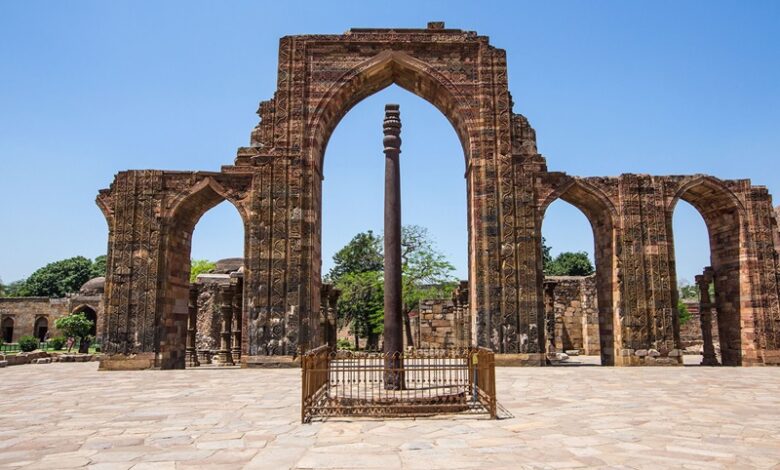Mysterious iron pillar out in the open confounds scientists as it hasn’t rusted in 1,600 years
News Mania Desk / Piyal Chatterjee / 20th May 2025

From the Leaning Tower of Pisa to the Egyptian pyramids and Stonehenge, certain structures are architectural wonders that have been enigmatic for ages. The inquiry that many individuals and scholars still pose is how these structures were constructed when technology was far less developed than it is today.
One notable monument is a 1600-year-old iron pillar located in Delhi, India, which has gained attention as it has not rusted despite being subjected to various weather conditions such as heavy rain and intense heat. Scholars speculate about what could have influenced the construction of this pillar in the Qutb Minar Complex that draws tourists from around the world. The ornamental pillar has endured extreme weather and pollution without rusting like typical objects made of iron and wrought iron.
Researchers globally have been attempting to solve the enigma of this pillar since 1912, and it was not until investigators from the Indian Institute of Technology in Kanpur, India, discovered the cause of the pillar’s extraordinary rust-free feature. It was discovered that, in contrast to contemporary iron, the pillar lacks sulfur and magnesium; instead, it contains a significant amount of phosphorous.
A different factor contributing to the iron pillar’s quality is the technique employed in its production. It was made using forge welding, a process that involves heating and hammering the iron to preserve its phosphorous content, a practice that is no longer followed. According to Archeo-metallurgist R. Balasubramaniam, the report’s author, a thin coating of a substance known as misawite was discovered on the surface of the iron pillar. The combination of iron, hydrogen, and oxygen enhances the pillar’s durability. According to the research, this layer was created by reactions occurring because of the phosphorus content in the pillar.
Balasbraniam suggested that ancient artisans recognized phosphorous’s capacity to form a rust-resistant coating on iron, which led them to deliberately select iron ore rich in phosphorous, according to Britannica. Another theory suggests that the absence of rust on the iron pillar could be attributable to the low humidity levels in Delhi and the climatic conditions surrounding the pillar. Nonetheless, these evaluations took place between 1930 and 1960, a timeframe insufficient to assess the various climatic conditions the pillar has encountered. This theory also prompts inquiries regarding the pillar’s original location, which remains uncertain.
Certain researchers think that the pillar was initially positioned at Varah Temple of Udayagiri Caves, close to Vidisha in Madhya Pradesh, and was constructed during the Gupta Empire in the 4th or 5th century BC. An alternative theory suggests that the astronomer Varahmira constructed the pillar and transported it from Vidisha to Mehrauli, where it is now found. The characteristics of the pillar are thought to aid in the production of corrosion-resistant iron for upcoming applications.
“If we do look at the technique that was used to create the pillar from a fresh perspective, beyond mere acknowledgment of its ancient origins, we may discover avenues to leverage similar methods for the development of sustainable material alternatives, considering the environmental harm associated with processes like metal extraction,” said Pragya Nagar, conservation architect, and heritage expert.






